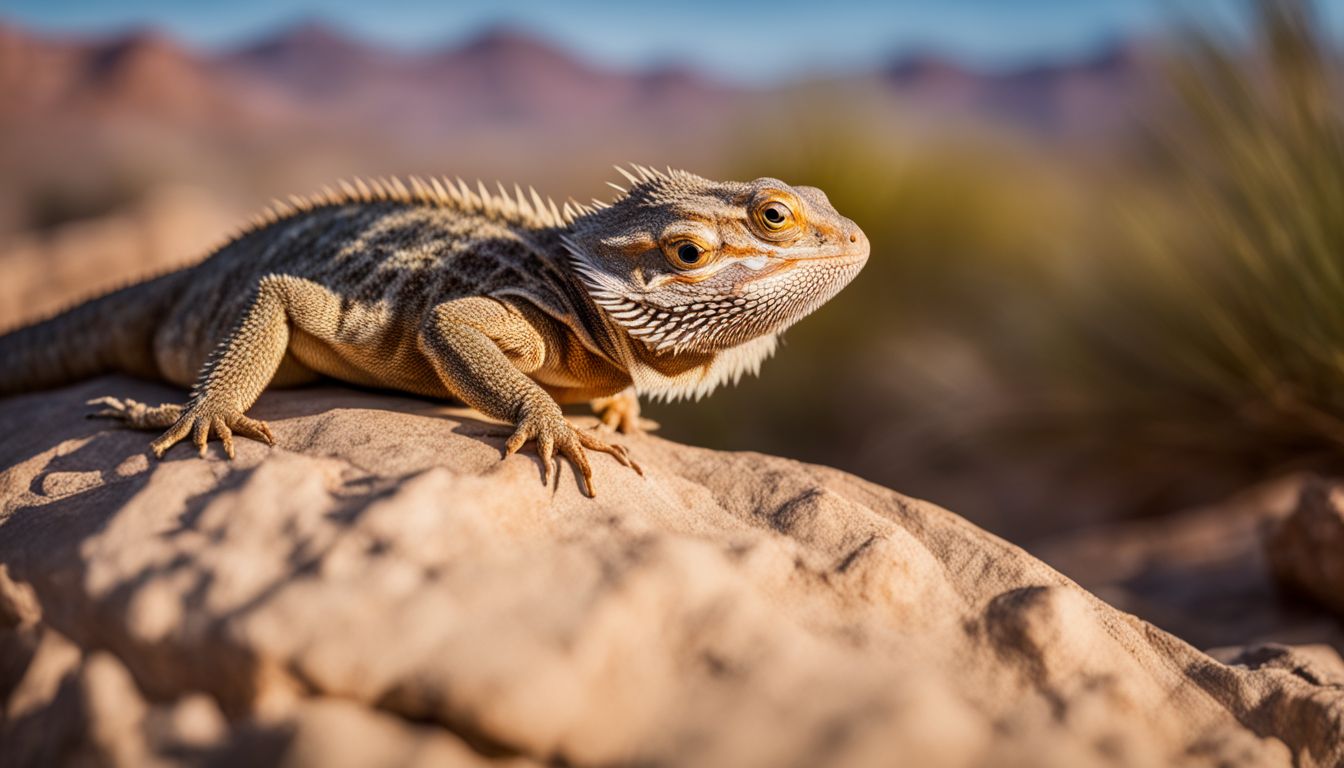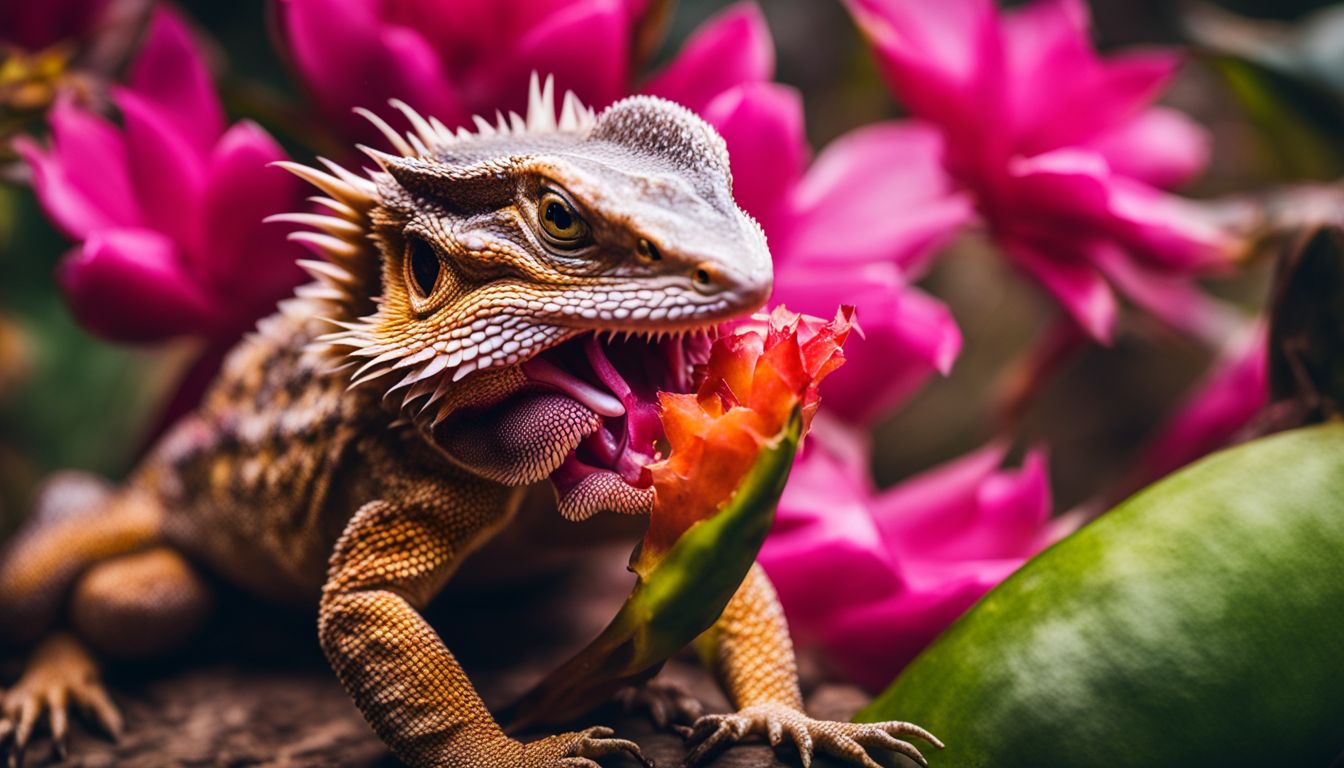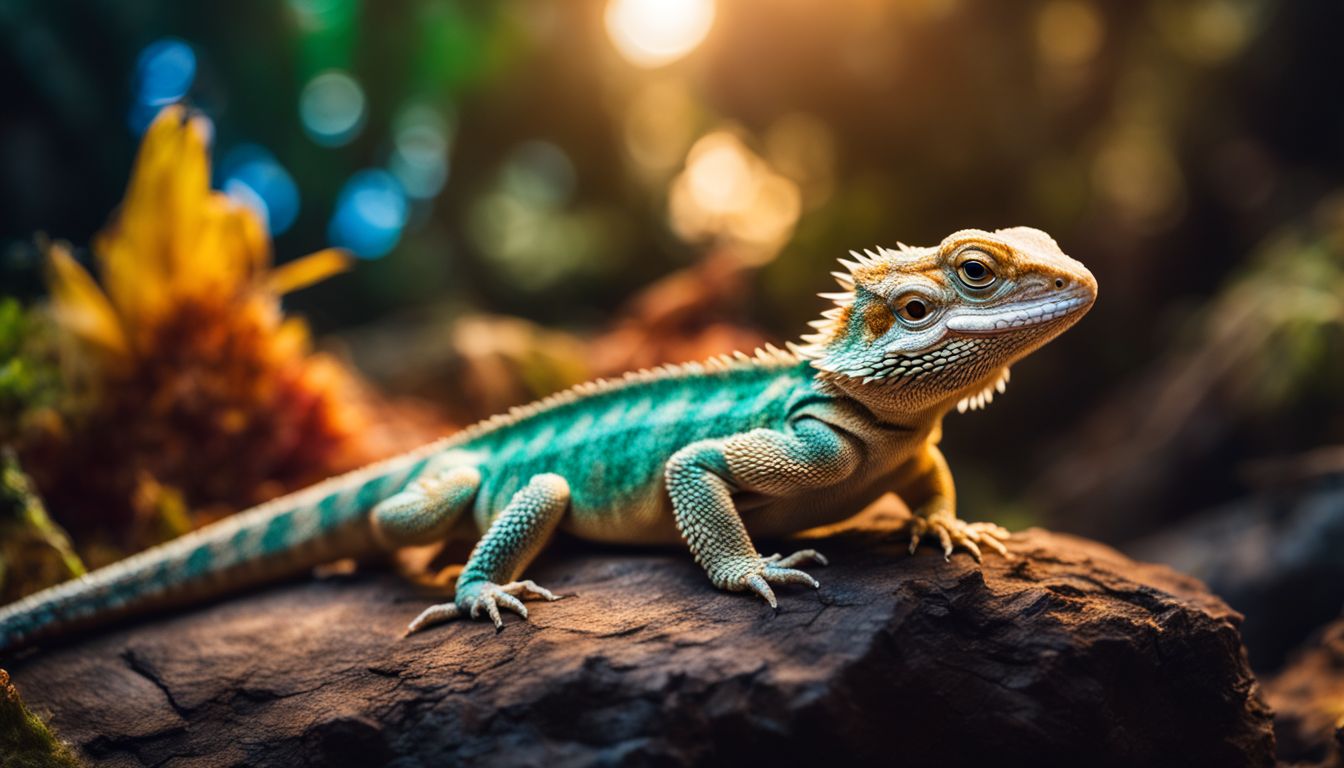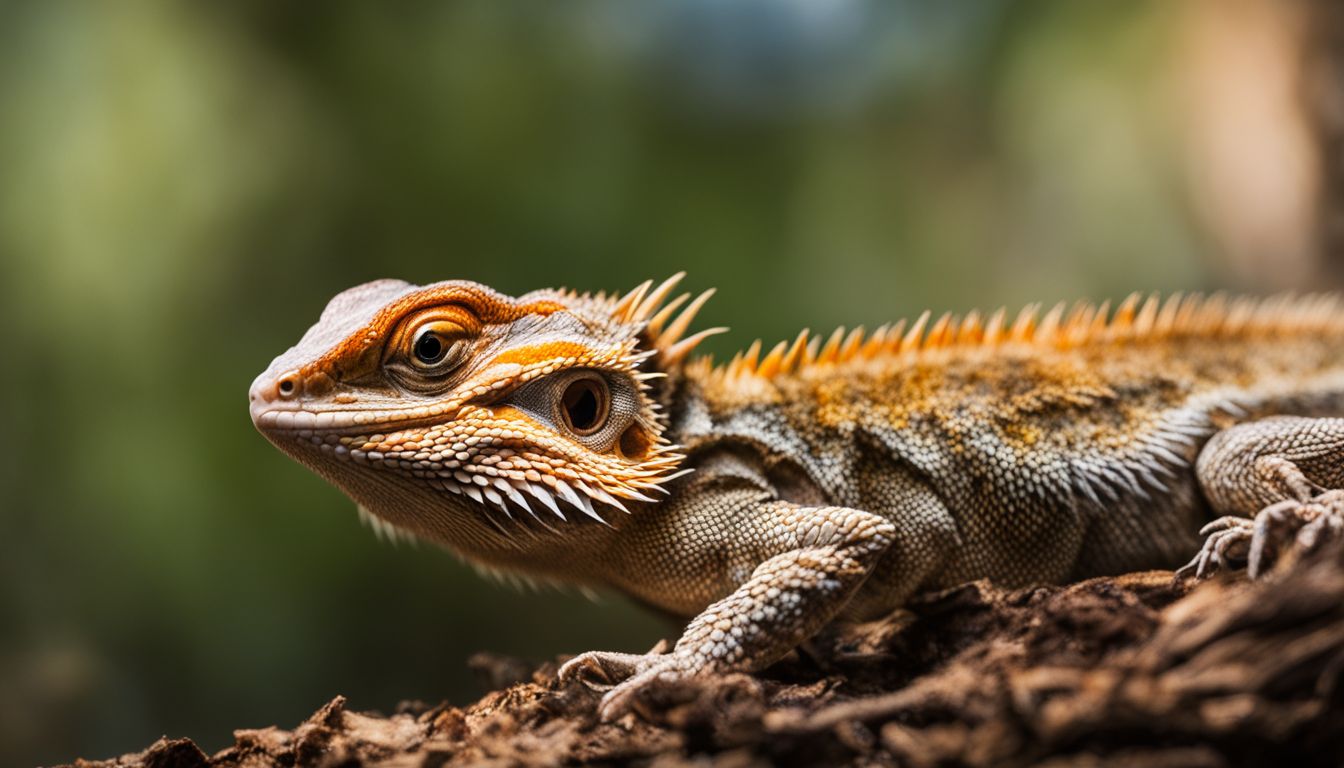Have you ever noticed your bearded dragon wagging its tail and wondered why? Tail wagging in these reptiles can signal emotions ranging from excitement to stress. This article will explore the reasons behind this behavior, offering tips on how to respond for a happy and healthy pet.
Stay tuned!
Exploring the Phenomenon: Why do Bearded Dragons wag their Tails?
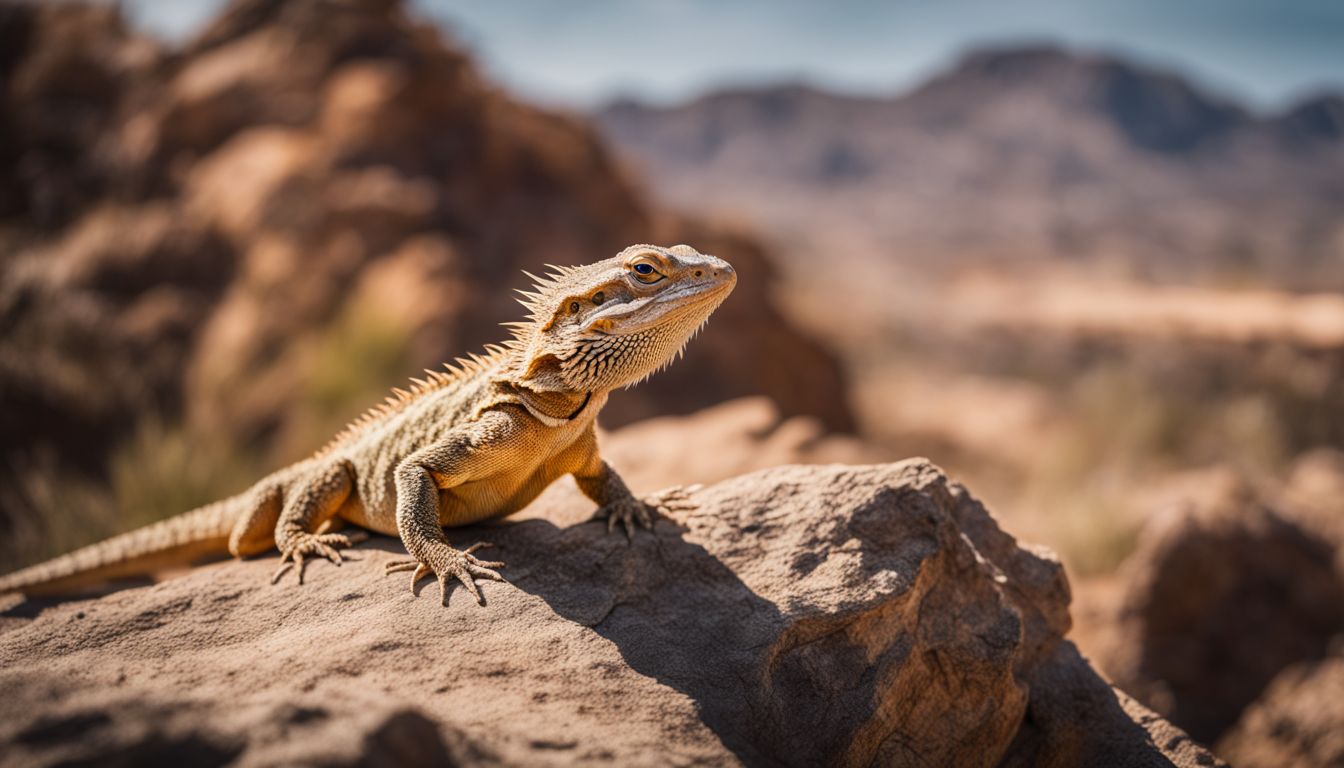
Bearded dragons wag their tails to communicate aggressiveness, especially during territorial disputes or when feeling threatened. They also wag their tails in anticipation of feeding time and when experiencing stress.
Aggressiveness
Tail wagging in bearded dragons isn’t just cute—it’s a complex form of body language, especially when linked to aggressiveness. These reptiles may show aggression through tail curling as a defensive move or to establish dominance.
This behavior can happen if they feel threatened or need to assert themselves over others in their territory. Understanding this aspect of their communication helps us better care for and interact with them.
Signs of aggression aren’t limited to tail movements—other behaviors include puffing up, hissing, and head bobbing. Knowing these signs is crucial for any bearded dragon owner. It not only keeps the pet safe but also prevents stressful situations that could harm its wellbeing.
Recognizing and respecting these territorial displays allows for a harmonious relationship between you and your scaly companion.
Feeding Time
Bearded dragons show a fascinating behavior around feeding time. They start to wag their tails in fast, side-to-side motions. This isn’t just a random movement; it’s anticipation of food coming their way.
Just like dogs might get excited and wag their tails when they see their owner with a treat, these reptiles are expressing their eagerness to eat through tail twitching.
This action serves as a clear signal to pet owners. It tells you that your bearded dragon is ready and looking forward to its meal. Observing this behavior can also help you better understand your pet’s feeding cues and overall well-being.
Each wag or twitch is an important part of reptile communication, especially around meal times, making it easier for novices to connect with these fascinating animals.
Stress
Stress in bearded dragons shows up in several ways, including tail wagging. This behavior isn’t just a random movement—it’s a sign that your lizard feels threatened or uneasy. Imagine being in a new place with no idea where anything is; that’s how stressed bearded dragons feel.
They might also show this behavior when they’re facing aggressive tank mates or are uncomfortable with their environment.
Giving them a warm bath and gently misting their habitat can work wonders for their stress levels, especially during shedding periods. Baby reptiles, like young bearded dragons, often experience stress as they grow and adapt to their surroundings.
Watching for these signs of stress and acting to soothe them helps keep your scaly friend healthy and happy.
The Significance of Tail Twitching in Bearded Dragons
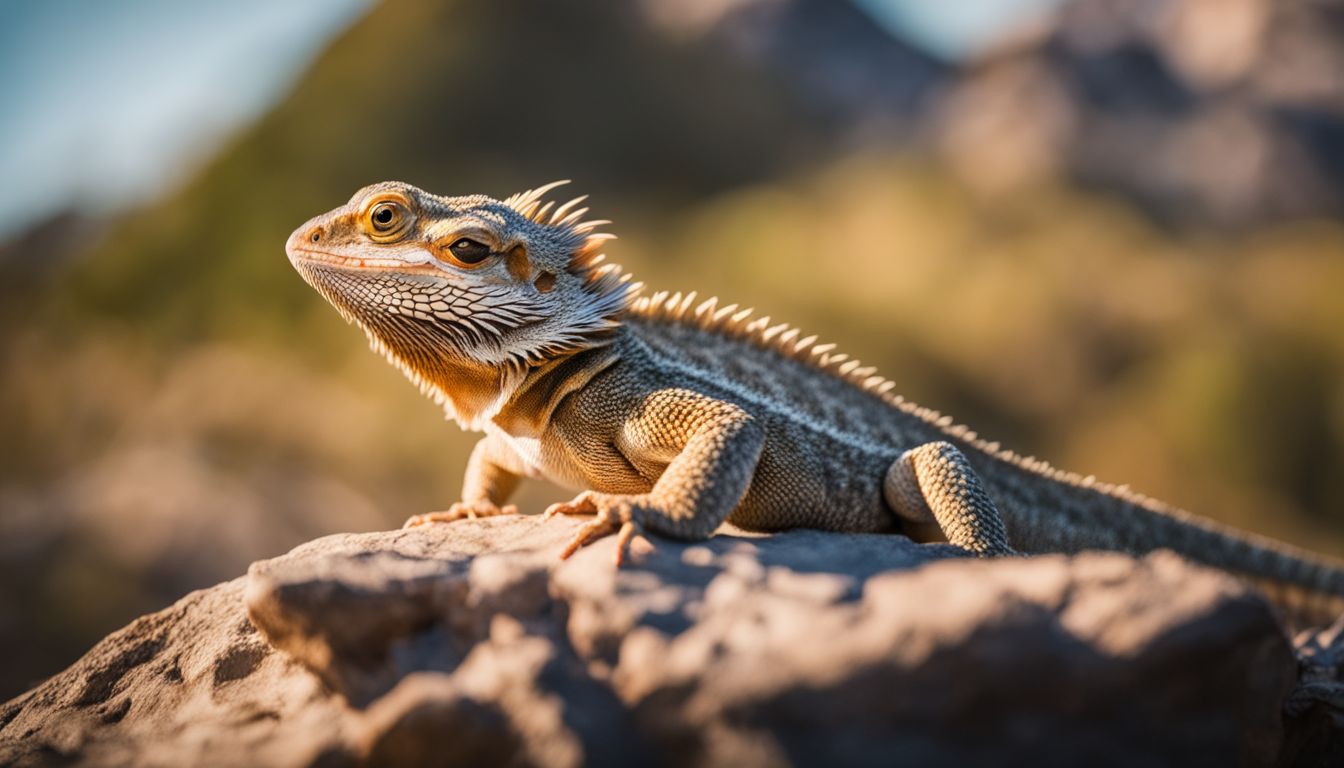
Bearded dragons twitch their tails to communicate. It’s a way for them to convey how they’re feeling. Tail twitching may signify that your bearded dragon is stressed or anxious. Additionally, it can indicate alertness and enjoyment in certain situations.
Understanding this behavior is crucial for the wellbeing of your pet lizard. Their body language, including tail movements, provides valuable insights into their mood and overall health.
Observing these cues allows you to adjust their environment accordingly and provide the necessary care. Paying attention to tail twitching helps in identifying potential health issues such as metabolic bone disease at an early stage, ensuring prompt intervention.
Responding appropriately to your bearded dragon’s tail movements contributes significantly to their comfort and contentment within their living space while reinforcing the bond between pet and owner.
Actions to Take if your Bearded Dragon is Wagging their Tail
When your bearded dragon is wagging its tail, it’s important to take the right actions to ensure its well-being. Here are some steps to consider:
- Observe the environment: Check for any potential stressors or triggers that might be causing your dragon to wag its tail, such as loud noises, other pets, or unfamiliar people.
- Assess their body language: Look for other signs of aggression or stress, such as puffing up their beard, hissing, or flattening their body against the ground.
- Provide a safe space: If you suspect stress or aggression, create a calm and quiet environment for your dragon to help alleviate any potential triggers.
- Seek veterinary advice: If you’re unsure about the reasons behind your dragon’s tail wagging behavior or if it seems abnormal, consult with a reptile veterinarian for professional guidance.
Conclusion
In conclusion, bearded dragons wag their tails for various reasons. It can indicate stress, aggression, or even excitement. Understanding their tail movements is crucial for interpreting their behavior and responding appropriately.
By recognizing the significance of tail wagging in these reptiles, owners can better care for and communicate with their bearded dragons.
Discover more about your pet’s dietary preferences by exploring what fruits can bearded dragons eat.
FAQs
1. Why do bearded dragons wag their tails?
Bearded dragons may wag their tails to express excitement, agitation, or as a form of communication.
2. Is tail wagging in bearded dragons a sign of aggression?
Tail wagging in bearded dragons can indicate stress or discomfort rather than aggression.
3. How can I interpret my bearded dragon’s tail movements?
Observing the context and body language accompanying the tail movement can help you understand your bearded dragon’s emotions and intentions.
4. What should I do if my bearded dragon wags its tail frequently?
If your bearded dragon consistently wags its tail, it’s advisable to assess its environment for potential stressors and ensure all care needs are met.
5. Can I train my bearded dragon to stop wagging its tail?
While some behaviors can be modified through positive reinforcement training, attempting to completely eliminate natural tail movements may not align with the well-being of the reptile.

